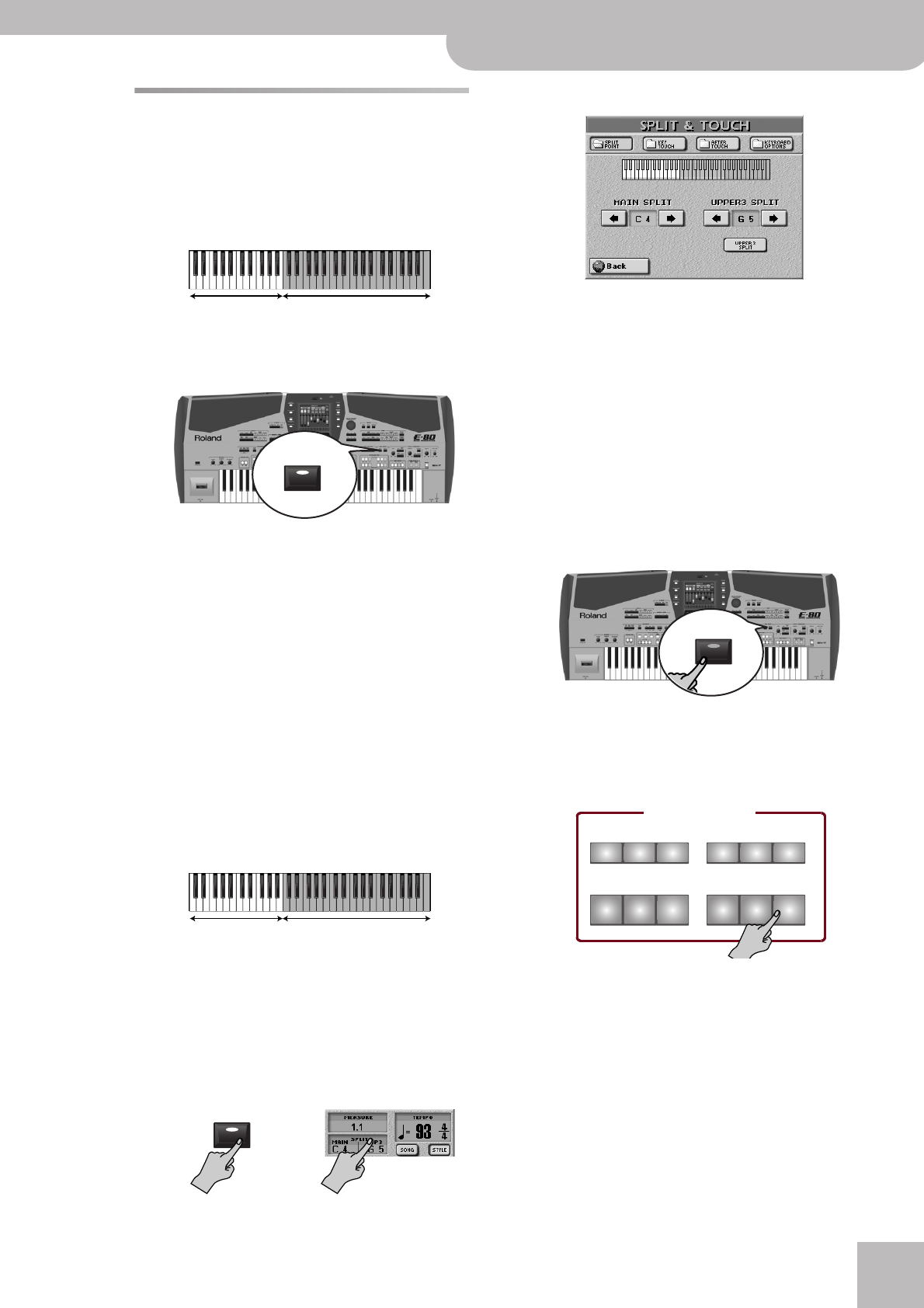
Split and Whole modes
E-80 Music Workstation
r
65
Split and Whole modes
Using the SPLIT Keyboard Mode
Split means that the keyboard is divided into two
halves. You can use the LW1, LW2 and MBS parts in the
left half and the UP1, UP2, UP3 parts in the right. (It is
also possible to use an additional split between UP1/
UP2 and UP3, see “Upper 3 Split” on p. 99.)
Here’s how to activate the SPLIT keyboard mode:
(1) Press the KBD MODE [SPLIT] button.
(2) Press the PART ON/OFF buttons of the parts (LW2,
LW1, etc.) you want to play via the keyboard and
switch off the parts you do not need.
If a part is on, its button lights.
Note: If you like, you can activate a Hold function for the
LW1/2 parts. That way, briefly pressing the notes to be played
by the LW1/2 parts is enough. The Arranger has a similar func-
tion (called ARR Hold). See also “Lower Hold” on p. 102.
Note: If none of the PART ON/OFF buttons lights, the notes
you play on the keyboard will not be audible. (It would, how-
ever, be possible to go on controlling the Arranger.)
Note: Your settings can be written to a User Program and
recalled at a later stage. See p. 125.
■Setting the split point
When the [SPLIT] button lights, the keyboard is split in
two halves. The split point is located at the C key
below the brown EFFECT slider. This key is called the
“C4”:
This split point applies both to the chord recognition
area of the Arranger and the SPLIT keyboard mode.
There may be situations where the automatically
assigned range is not what you need. In that case,
you can change the split point:
(1) Press and hold the KBD MODE [SPLIT] button or the
SPLIT field in the display.
The display now looks more or less as follows:
(2) Use the MAIN SPLIT [√][®] fields to select the new
split point.
The setting range is C#2~B6. The orange keys in the
display refer to the right half. As you can see, the
“SPLIT POINT” is the lowest note of the right half.
Note: Your settings can be written to a User Program and
recalled at a later stage. See p. 125.
Using WHOLE mode
Whole means that all keys trigger the same part(s).
There is thus no split. You can assign up to six parts
to the entire keyboard: MBS, LW1, LW2, UP3, UP2 and
UP1.
(1) Press the KBD MODE [WHOLE] button.
Switching parts on and off
(2) Press the PART ON/OFF buttons of the parts (MBS,
LW2, LW1, etc.) you want to play via the keyboard
and switch off the parts you do not need.
If a part is on, its button lights.
Note: If none of the PART ON/OFF buttons lights, the notes
you play on the keyboard will not be audible. (It would, how-
ever, be possible to go on controlling the Arranger.)
By the way: selecting WHOLE does not mean that the
Arranger is automatically switched off or can no
longer be used. See “Arranger Type (chord mode)” on
p. 89 for details.
Note: Your settings can be written to a User Program and
recalled at a later stage. See p. 125.
LW1, LW2, MBS UP1, UP2, UP3
SPLIT
Arranger control UP1, UP2, UP3
SPLIT
—OR—
WHOLE
PART ON/OFF
TONE ASSIGN
MBS LW 2 LW 1
KEYBOARD PART
UP 3 UP 2 UP 1
